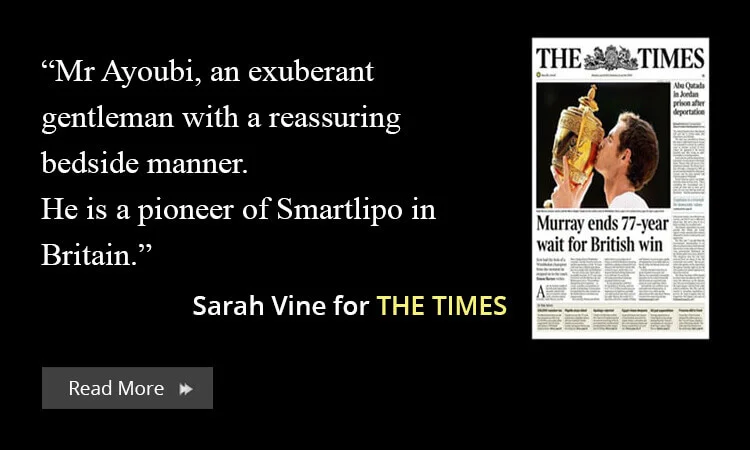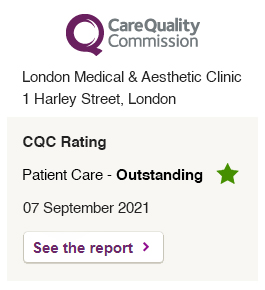What is Breast Reconstruction?
Breast reconstruction is an operation to make a new breast shape after mastectomy (removal of a breast), or to improve the breast shape after lumpectomy (removal of part of the breast).
Not surprisingly, most women find it difficult to come to terms with the loss of a breast. Up to half of all women who have a mastectomy choose to have breast reconstruction, either at the time of their initial surgery or afterwards.
The aim of breast reconstruction is to match the remaining natural breast as closely as possible. This can either be done by using an implant, which is put under the skin and muscle that covers your chest, or by using skin, fat (and sometimes muscle) from another part of your body to create a breast shape. A combination of these techniques is used for some women. Your surgeon will advise you on the type of reconstruction that’s most suitable for you. It will depend on:
- how much of the breast tissue has been removed
- how healthy the tissue is at the planned operation site
- whether or not you have had radiotherapy to the breast area or chest wall
- your general health and body build
- your personal preference.
It’s possible to create a new nipple and this is often done as a separate operation once the reconstructed breast has settled into its final shape. It may be possible for it to be done at the same time as the breast reconstruction. Not everyone chooses to have a nipple reconstruction.
Why Consider Breast Reconstruction ?
There are many benefits to Breast reconstruction surgery that you should consider such as;
- You won’t have to wear an external artificial breast (prosthesis).
- In clothes (including underwear, or a swimming costume), your appearance will be similar to before your surgery.
- You will have a cleavage.
- Even without clothes, you may feel better with a recreated breast that gives you a more natural shape.
- It can help to restore your self-confidence and feelings of femininity and attractiveness.
- Breast reconstruction does not increase the chance of the cancer recurring. It doesn’t interfere with cancer treatments. Mammograms, scans and x-rays of the breast area can still be taken and if the cancer comes back in the breast area, it can still be detected
Taking all of this into consideration, you must also be aware of the limitations of the surgery such as;
The reconstructed breast will not feel or look exactly the same as your natural breast.
- Your new breast won’t be as sensitive as your natural breast.
- If you have children afterwards, you won’t be able to breastfeed from the reconstructed breast. However, you should be able to feed with the other breast if you wish to.
- Most women need to have two or three operations to get a good match with their other breast. With immediate reconstruction, it’s easier to get a good result with just one operation but this may not be possible for everyone. After the initial surgery, further operations may be done to tidy up the scars. Liposuction (removing fat from under the skin) is sometimes used to shape the reconstructed breast. It may be possible to do these later operations under local anesthetic as a day case.
- You may need to have an operation on your other breast to reduce or increase its size, or to lift it so that both breasts are even. This can be done at the same time as the reconstruction or at a later date.
Step by step Breast Reconstruction
There are 2 ways to carry out the procedure.
The first is using a breast implant.
A new breast shape can be created by placing the implant behind the skin and muscle to create a new breast. This method is often used for immediate breast reconstruction.
Alternatively a breast shape can be created using tissue expansion. An expandable implant is placed under the skin and muscle and gradually filled to make a new breast shape. It may then be replaced by a permanent implant.
The second method uses skin, muscle and fat from another part of the body to form the shape of the breast. This type of reconstruction is more complex.
A pedicled tissue flap reconstruction involves tunnelling skin, muscle and fat from either the back or the tummy (abdomen) through to the chest to form a new breast shape. The blood supply for the muscle stays connected to the area from which it is taken. An implant may be used behind the tissue to help give the right shape.
A free flap reconstruction also uses skin, fat and muscle, but the tissue is removed completely and detached from its blood supply before being transferred to the breast area. The flap is connected to a new blood supply using microsurgery.
A free perforator flap reconstruction uses skin and fat from the lower abdomen, or occasionally the buttock. This is transferred to the breast area. The skin and fat is removed completely with attached blood vessels and the blood vessels are reconnected to a new blood supply using microsurgery. No muscle is taken with this operation.
The benefits and disadvantages of this treatment are Breast reconstruction using muscle, fat and skin from the back or abdomen is a major operation and needs a hospital stay of at least one week. Using a flap from the back generally gives less risk of complications than using a pedicled flap from the abdomen, but an implant is often needed.
The pedicled TRAM flap can only be used for women who are in good health and do not smoke. After the muscle of the abdominal wall has been removed, a mesh is used to strengthen the muscles to prevent hernias or bulges. However, a few women may still develop a hernia or bulge
During a mastectomy the whole breast is removed, usually including the nipple, however it may be possible to keep your nipple if you are having all the breast tissue removed with immediate reconstruction.
Recovery after Breast Reconstruction
Immediately after surgery, your reconstructed breast may be covered with dressings that the nurses will change regularly. Alternatively, the wound may be held together with sticky, plastic strips, which are left in place until the wound has healed. At first, your new breast will be larger than your other breast. This is usually due to inflammation and swelling after surgery. It should gradually get smaller over a few weeks or months.
Once the dressings are removed, you can gently shower the wound with clean water. Pat the wound area dry with a clean towel – don’t rub it. Once the wound has healed you can have baths or showers as normal. Wash with lukewarm water and unperfumed soap, rinsing the wound line well.
Our breast surgeons advise that once the wounds have fully healed, women should massage the skin and scars over the reconstructed breast daily with body oil or cream. This keeps the skin supple and in good condition.
They will also advise women and supply a support garment such as a firm supportive bra, for several weeks after reconstructive surgery and recommend wearing this at night as well as during the day.
By about six weeks after breast reconstruction you should be able to fully move your arm on the side of the reconstruction with little discomfort. It’s important that immediately after surgery a physiotherapist shows you how to do suitable arm exercises. These exercises will be changed as you recover. A specific exercise plan after reconstructive surgery will be give to you that is especially right for you.
Reconstructing the nipple
There are two options for keeping your own nipple:
- The nipple can be left attached to the skin of the breast and just the tissues underneath the skin are removed.
- The nipple and its surrounding skin may be removed with the rest of the breast tissue and then attached (grafted) onto the reconstructed breast.
It won’t be possible to keep the nipple if there is any possibility that the nipple or the surrounding tissue contains cancer cells.
Nipple reconstruction
If possible, a nipple reconstruction will be done at the same time as the breast reconstruction. However, if it can’t be done then, a nipple can be reconstructed at a later date. This is usually some time after the breast reconstruction has healed and settled into its final shape and position. This enables the breast surgeon to position the nipple accurately, in line with the one on your other breast. Breast surgeons recommend that the time between the two operations for breast and nipple reconstruction may vary, but is usually about 4 – 6 months.
Techniques used
Two main techniques are used to reconstruct a nipple. In the first technique, skin on the new breast can be folded into a nipple shape – this is a nipple flap. In the second technique part of the nipple on the natural breast is removed and placed on the new breast – a nipple sharing graft. Both procedures are usually done under a local anaesthetic and you should be able to go home the same day.
It’s important to be realistic about what to expect from a reconstructed nipple. It will not react in the same way to temperature changes or touch – or have the same sensation as a natural nipple.
Nipple tattooing
Tattooing after breast reconstruction can give the reconstructed nipple a very good appearance. It is usually done under local anaesthetic, using either a local anaesthetic cream or an injection. The procedure usually takes 30 – 40 minutes.
A semi-permanent pigment is injected under sterile conditions to prevent infection. The aim is to match the colour of the nipple and areola of your natural breast. The amount injected will vary slightly from person to person to give the best appearance. Sometimes the tattooing procedure needs to be repeated to give the best result. A couple of coatings usually lasts approximately 18 months to two years. The opposite nipple may need to be tattooed to get a good match.
The tattooing itself is not usually painful but the area may feel sore (like a graze) for a few days afterwards. You will probably be advised to wear a dressing over the area for about a week. This may need to be changed in case the dye leaks through the dressing.
Nipple prosthesis
You may decide that you don’t want to have another operation to make a nipple. In this case you could have a silicone stick-on nipple, which can be attached to the reconstructed breast. These can be bought ready-made, or made to match your other nipple. The nipple prostheses are usually made in the moulding room at the hospital
History of Breast Reconstruction
As with all procedures they all have a history.
Documented cases of breast cancer date back to 6000 BC, and following its history over the centuries is harrowing to say the least. If Cleopatra had breast cancer, the ancient Egyptian doctors would have cauterized her breast in hopes of burning out the disease.
The treatment was so untenable that women neglected their disease if a lump was discovered. Their breasts became disfigured as their tumors took over their bodies. But the alternative was worse than the disease.
George Washington’s mother succumbed to breast cancer. So did Queen Mary. Nabby Adams, the daughter of John and Abigail Adams, suffered through a mastectomy in which she was tied to a chair and without anesthesia her breast was removed. She survived the surgery only to die from the disease. This was common practice in the 18th century.
In the 19th century, anesthesia was developed and surgical options improved a great deal. Breast cancer surgery was revolutionized by Dr. William Halsted, who popularized the radical mastectomy as the treatment of choice for any woman with breast cancer.
Even though an extreme amount of tissue was removed, women were surviving the operation and their breast cancers. He removed not only the breast, but the lymph nodes and the chest muscles. In some extreme cases, other surgeons performing radical mastectomies included removing part of the rib cage. This was so disfiguring though that the practice was soon stopped.
It was not until the latter half of the 20th century and the awakening of the women’s movement that these radical procedures were questioned. Modified radical mastectomy (total mastectomy with axillary lymph node dissection) was perfected. Breast conservation therapy consisting of lumpectomy, sentinel lymph node biopsy and radiation was developed. The emergence of breast cancer reconstruction took off.
The Evolution of Breast Implants
During World War II, Dow Chemical Company created commercial uses for silicone. The first use of silicone breast implants for cosmetic breast augmentation occurred in 1962. Dow Corning, along with several other companies, started manufacturing implants both for cosmetic augmentation and reconstruction after mastectomies. Women found that silicone implants looked and felt better than the saline alternative.
However, those early generation devices exhibited problems over time. Silicone leakage led to breast scarring and sometimes painful deformities. Allegations that breast implants could cause cancer or autoimmune diseases were made by health care advocacy groups, fueling mass litigation. By then over one million women had silicone implants.
In 1992, the Food and Drug Administration banned them. David Kessler, the head of the FDA stated, “We want surgeons to stop using these implants in patients until this new evidence can be thoroughly evaluated, I’m asking patients to understand that the Food and Drug Administration commissioner cannot assure the safety of these devices at the present time.” Dow Corning stopped producing implants and later went into Chapter 11 bankruptcy.
Between 1992 and 2006 saline filled breast implants remained the only fully-approved type of implant on the market in the United States. Patient satisfaction was, and remains good, but the interest in silicone implants continued. During this period large scale studies of the health effects of silicone implants were performed.
Numerous reports from institutions including the Mayo Clinic, the National Institute of Medicine, and other independent commissions all corroborated that there was no causal relationship between breast implants and illnesses like cancer or lupus. This led to the national adjunct study which was commissioned to prospectively analyze the outcomes of women using silicone implants for reconstruction.
Plastic surgeons worked with the two remaining U.S. implant manufacturers, Mentor and McGhan (now Inamed/Allergan) to report data in an FDA approved protocol.
Finally, in November of 2006, the Food and Drug Administration reversed its ban on silicone-filled breast implants. The FDA’s press release stated, “The products have been determined to be safe and effective.” Now, silicone gel implants are widely used for both cosmetic breast augmentation and breast cancer reconstruction. These newer generation silicone devices are the safest, softest and most natural implants to date. Both saline and silicone implants are popular choices today.
The Evolution of Autogenous Tissue Reconstruction
Numerous techniques have evolved to allow for breast reconstruction using natural tissues from a woman’s body rather than an artificial implant. The earliest techniques utilized muscles to provide blood flow to skin and fat so that that this tissue could be transported to the chest to create a breast mound.
The latissimus dorsi flap was the most popular form of autogenous tissue breast cancer reconstruction in the 1970s. Skin, fat and muscle from the back were rotated to the front of the body to create a breast. Today, this procedure is used in conjunction with implants to provide a fuller looking breast.
In 1982, the first TRAM flap (transverse rectus abdominus myocutaneous) procedure was performed. In this procedure, a woman’s lower abdominal skin and fat is used to make the breast. In this flap, the rectus abdominis muscle is used to support the skin and fat which is tunneled up into the breast area. Today, this flap remains the standard of care in this and other countries, creating natural appearing breasts and improved abdominal contours.
Nevertheless, there are drawbacks to using these muscles and so techniques have evolved to minimize or eliminate the need for sacrificing muscles for breast cancer reconstruction. The use of microvascular free flaps allows transplanting tissue from one part of the body to another without the use of a large muscle. The abdomen is the source of many varieties of such flaps.
The TRAM free flap uses only a small portion of the rectus muscle, while the DIEP free flap (deep inferior epigastric perforator), and the SIEA free flap (superficial inferior epigastric) utilize none of the rectus muscle.
The buttock is another source of skin and fat that can be used to create a breast. The GAP free flaps (gluteal artery perforator) allow a hidden donor site most useful for women with insufficient abdominal tissue. As a result of these procedures, women recover easier and have fewer complications from the donor site.
The future is bright for breast reconstruction and breast cancer patients. It was a long, hard journey in the beginning. But with the advent of systemic therapy, new surgical procedures, and a healthy partnership between patient and doctor, women are living longer and looking better than ever before.














































